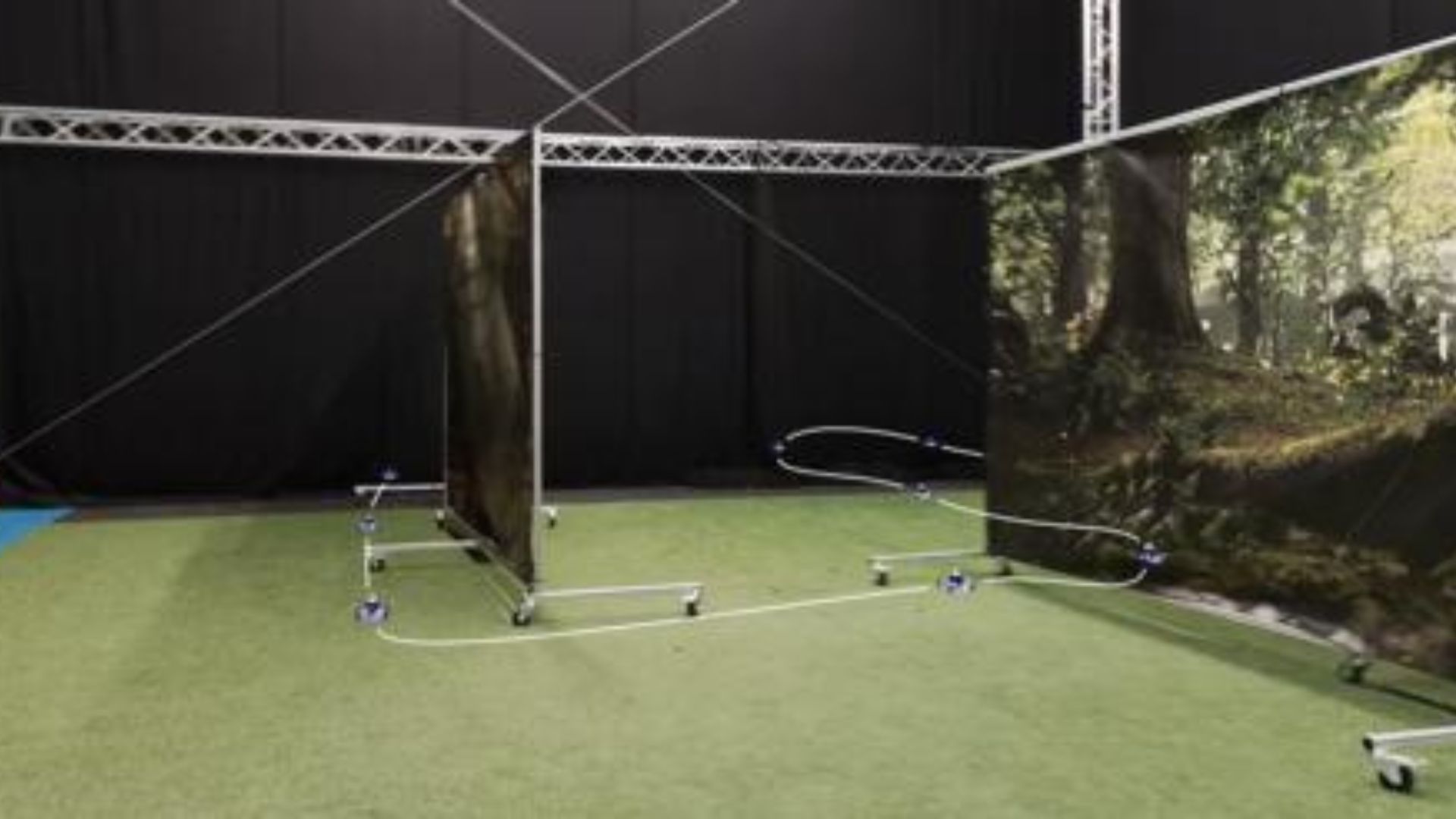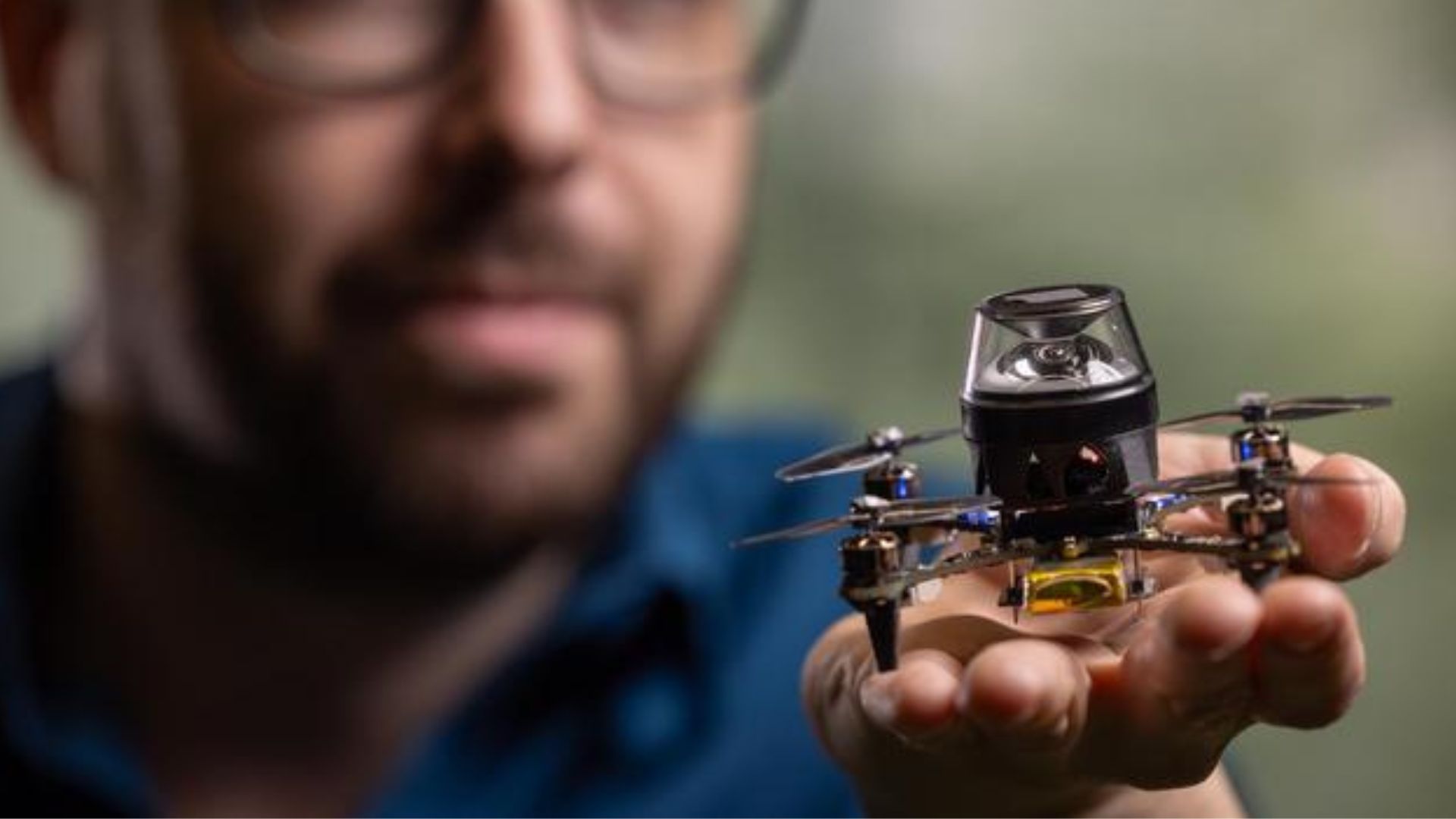Researchers have developed an autonomous navigation system for small, lightweight drones, inspired by insects.
A team from TU Delft was inspired by biological discoveries about how ants use their ability to see their environment and calculate their steps to navigate safely back home.
According to engineers, this method allows robots to travel long distances and return home with minimal computing power and memory (0.65 kilobytes per 100 m).
“In the future, small autonomous robots could find a wide range of applications, from monitoring inventory in warehouses to finding gas leaks at industrial sites,” researchers said in a statement.
Insect-inspired ‘snapshot’ navigation
Small robots, weighing from ten to a few hundred grams, have significant potential for real-world applications. Their lightweight design ensures safety even in the event of accidental collisions, and their small size enables them to navigate through narrow spaces. If produced affordably, they can be deployed in large numbers, efficiently covering large areas such as greenhouses for early detection of pests or diseases.
However, autonomous operation is challenging due to resource constraints compared to larger drones. Navigation is particularly problematic. While GPS can aid in outdoor navigation, it is ineffective and inaccurate indoors in cluttered environments. Wireless indoor beacons are expensive and impractical in scenarios such as search and rescue.
According to researchers, most AI for autonomous navigation is designed for large robots, using heavy, power-intensive sensors such as LiDAR, which are not suitable for small robots. Vision-based approaches, while energy-efficient, require the creation of detailed 3D maps, which requires significant processing power and memory that is beyond the capacity of small robots.
Researchers turned to nature and drew inspiration from insects for navigation of small robots, with minimal resources. Insects combine odometry (movement tracking) with visually guided behavior (display memory).
In the snapshot model, insects such as ants periodically take snapshots of their environment. When they are near a snapshot, they compare current images, minimizing differences to precisely navigate back to the snapshot and correct odometry bias.
Efficient indoor navigation of drones
The DU Helft team adapted previously developed techniques to develop a bio-inspired approach. This strategy combines visual homing, which guides orientation in relation to visual cues in the environment, with odometry, which measures the distance traveled in a specific direction.
The researchers tested their method under various indoor conditions using a 56-gram Crazyflie Brushless drone with a panoramic camera, microcontroller and 192 KB of memory.
Initially, the robot took off and flew to its target, stopping occasionally to take photos of its surroundings. The drone used visual homing to travel back the same path, periodically making course corrections for drift by comparing its current location to waypoint photos.

The approach was incredibly memory efficient due to the high compression and precise spacing of the images. All visual processing took place on a small computer, a so-called “microcontroller”, which can be found in many inexpensive electronic devices.
According to the team, the proposed strategy is less versatile than state-of-the-art methods. There is no mapping capability, but the strategy does allow for a return to the starting point, which is sufficient for many applications.
Drones can fly out, collect data and then return to the base station for applications such as crop monitoring in greenhouses and inventory management in warehouses. Images relevant to the target can be stored on a small SD card and later processed by a server. However, they do not need to use simple navigation.
The details of the team’s research were published in the journal Science Robotics.
ABOUT THE EDITORS
Jijo Malay Jijo is an auto and business journalist based in India. With a BA in History (Honours) from St. Stephen’s College, University of Delhi, and a PG Diploma in Journalism from the Indian Institute of Mass Communication, Delhi, he has worked for news agencies, national newspapers and auto magazines. In his spare time, he enjoys off-roading, political discourse, travelling and teaching languages.
